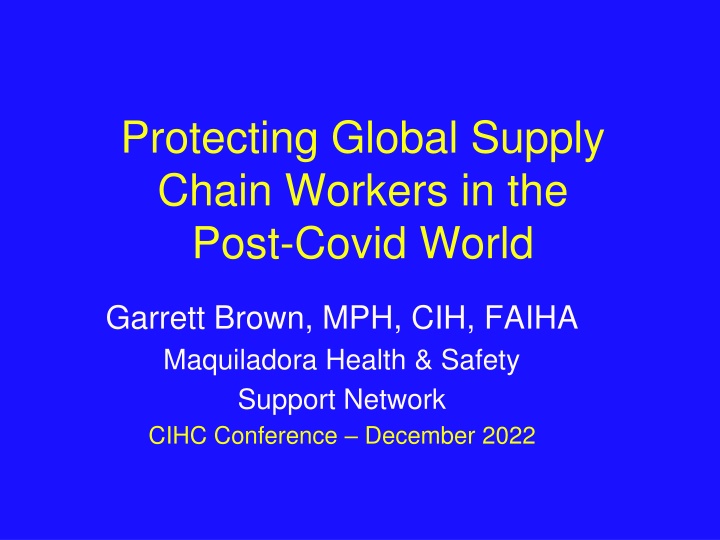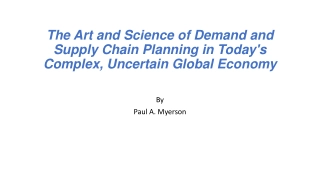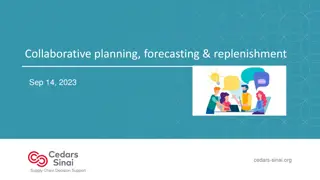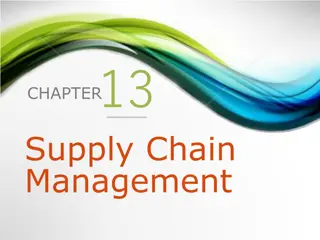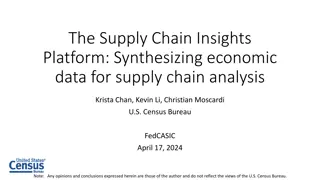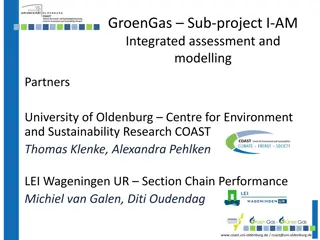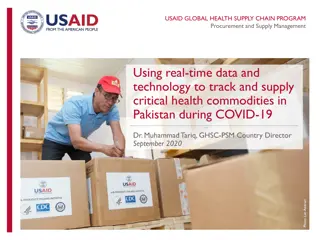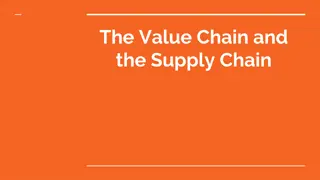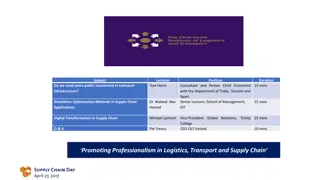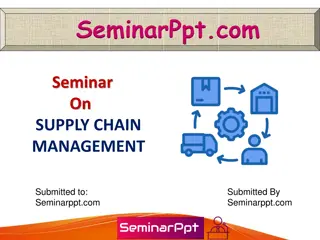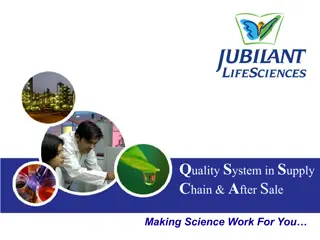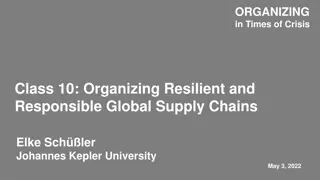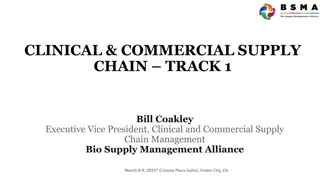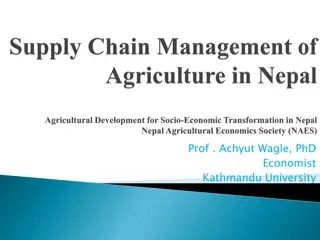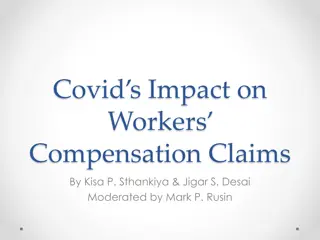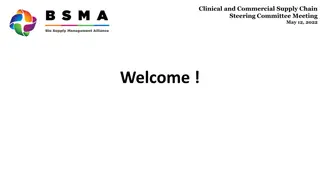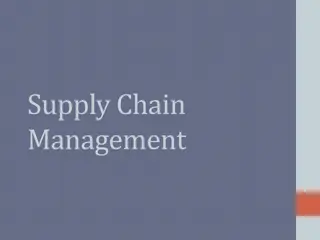Protecting Global Supply Chain Workers Post-Covid
In the post-Covid world, there is a critical need to safeguard the rights and well-being of global supply chain workers. Explore the impact on supply chains, alternatives to CSR, and actions OHS professionals can take. Uncover the vulnerabilities, inequalities, and power dynamics shaping the global economy and workforce.
Download Presentation

Please find below an Image/Link to download the presentation.
The content on the website is provided AS IS for your information and personal use only. It may not be sold, licensed, or shared on other websites without obtaining consent from the author.If you encounter any issues during the download, it is possible that the publisher has removed the file from their server.
You are allowed to download the files provided on this website for personal or commercial use, subject to the condition that they are used lawfully. All files are the property of their respective owners.
The content on the website is provided AS IS for your information and personal use only. It may not be sold, licensed, or shared on other websites without obtaining consent from the author.
E N D
Presentation Transcript
Protecting Global Supply Chain Workers in the Post-Covid World Garrett Brown, MPH, CIH, FAIHA Maquiladora Health & Safety Support Network CIHC Conference December 2022
Presentation Outline The global economy today The impact of Covid on supply chains Effective alternatives to CSR What OHS professionals can do to help protect supply chain workers 2
Global Economy Top 100 world economies: 69 corporations, 31 countries Top 200 world economies: 153 corporations, 47 countries Top 10 global corporations = $3.1 trillion in revenue more than combined budgets of 180 countries (UN = 193) 3
Global Economy Supply chains handle 80% of world s $74 trillion economy 500 largest transnational corporations: 70% world trade 1/3 manufacturing exports 3/4 trade in commodities 4/5 technical and management services 4
Global Manufacturing Profound shift in manufacturing: - from: well-regulated, high wage, often unionized plants in developed world - to: very low wage, basically unregulated, non-union plants in the developing world All these plants are competing with one another for maximum competitive advantage in production costs for the brands 5
Global Workers Vulnerable workforces (ILO): 152 million children (ages 5-17) at work 258 million immigrant/migrant workers (including ~190 million migrants in China) 67 million in Export Processing Zones (EPZs) with few or no legal rights 24.9 million held in forced labor 16 million in private sector businesses Women and girls make up 58% 6
Inequalities in Wealth Growing inequality and deep poverty as climate change advances: 900 million people live on less than $1.90/day 700 million people live on less than $1.25/day Global top 1% owns 41% of wealth; top 10% owns 86%; bottom half owns just 10% 7
Inequalities in Political Power Corporate revenue and profits greater than most national budgets Influence from PR and marketing skills, lobbying, and campaign contributions Developing world desperate for foreign investment for economic development Governments lack of resources (human, financial, technical) for independent course of action 8
Supply chain problems Very long hours of work Very low pay and entrenched poverty Pay delayed, under-paid, or never paid Unsafe and unhealthy conditions Physical abuse and sexual harassment Continuing child labor Forced labor and human trafficking 9
Bad conditions continue: How do we know? News media reports Factory reports from non-governmental organizations (NGOs) Reports from Multi-Stakeholder Initiatives (MSIs) Academic research B-Schools and private sector investor benchmarking CSR reports from transnational corporations themselves 10
Impact of Covid Pandemic Response by international brands: Cancel orders, including completed and in- process orders ($40 billion in garment) No reimbursements for bought materials Demands for steep discounts from supplier factories (up to 70% of agreed price) Payments withheld for >90 days Suspend CSR monitoring, worker participation programs 11
Domino Effect Down the Supply Chain Supplier factory response: Desperate for orders at any price Cut payment of back wages, severance Intensified work regime Increased production targets Wage cuts Increased physical, verbal, and gender/sexual harassment and violence Lack of social distancing, PPE for Covid 12
Impact on Workers Theft of back wages and legal severance: $11.85 B from 5/20 3/21 Increased debt (16%-25%) Increased food insecurity (38%) and hunger (20%) Decline in remittances to rural areas (32%) resulting in more poverty there Study by the Univ of Sheffield (UK) 13
Covids Cumulative Impact Supplier factories Debt, bankruptcy, zero profit orders Supply chain workers Debt, poverty, hunger, intensified work routines and abuse Litmus test for CSR approach: failure Pledges of social responsibility ignored Renewed profits (starting 2021) not shared 14
Why CSR Fails Workers Three key factors: Sweatshop business model in sourcing policies and practices Ineffective, corrupt monitoring Lack of any meaningful worker participation in developing, implementing and maintaining programs 15
Alternative to CSRs voluntary self-regulation Worker-driven Social Responsibility (WSR) Bangladesh / International Accord: Trained, genuinely independent inspectors Public inspection reports, corrective action plans Mandatory hazard correction Worker participation integrated into process WSR Network website: https://wsr-network.org 16
Enforceable Brand Agreements Indonesia: Freedom of Association agreement in sports shoe factories Honduras: Freedom of Association agreement in garment factories Lesotho and India: Prevention of gender-based harassment and violence in garment factories 17
WSR Principles/Approach Workers must be equal participants in designing and implementing programs Obligations for global corporations must be binding and enforceable Buyers must provide their suppliers with the financial capacity and incentives to comply with WSR programs 18
WSR Principles There must be swift economic consequences for non-compliance Correction of hazards and violations must be measurable and have clear deadlines for completion Verification of corrective action plans must be independent and thorough Key: Transparency and accountability 19
Transparency Some brands website listing of Tier 1 suppliers Example of International Accord Development of benchmarking reports Corporate Human Rights Benchmark Know the Chain Business and Human Rights Resource Centre, London 20
Accountability Accord and brand agreements Permanent Court of Arbitration Public campaigns (#PayYourWorkers) Haiti ($330K); Thailand ($8.3 million); India ($58 million) Anti-Greenwashing campaigns False or exaggerated environmental claims investigated by EU agencies, news media 21
Regulations on the horizon Human Rights Due Diligence EU draft law under consideration; laws approved in the UK, France, Germany and Norway Key mandatory components: Identify and assess actual or potential human rights impacts on people/nature Take appropriate action to correct impacts Track the effectiveness of measures Communicate results to affected stakeholders and communities 22
EU Regulatory Proposals Corporate reporting in effect now Broad categories of ESG impacts Forced Labor sales ban under consideration Good Clothes, Fair Pay campaign The devil is in the details for all legislative proposals 23
US Garment Worker Bills California went into effect Jan 2022 Garment Workers Protection Act (SB 62) New York failed in 2022, still alive Key aspects Set minimum wages and working conditions, prohibits piece work pay Holds brands/retailers responsible Reinforce worker participation 24
After 30 years of CSR: How About Back to Basics ? We have inspections of factories, both announced and unannounced. But we just don t have the assurance that things will be the same the next day. Factories in China are incredibly sophisticated at finding ways to fool us. The best monitors are the workers themselves. - Doug Cahn, Reebok CSR Director, Financial Times (London), December 2002 25
The Basics Allow workers to speak and act for themselves Allow workers to represent themselves Allow workers to play the key roles essential to all effective OHS programs Inspections, accident investigations, hazard controls, peer training 26
Whats Required to Achieve The Basics Curb the hostility towards trade unions by brands and suppliers Stop reprisals and retaliation against active workers Promote genuine worker participation Respect national and international laws 27
International Standards ILO tripartite conventions, codes ILO Fundamental Rights at Work FOA and collective bargaining (C 87, 98) End forced labor (C 29, 105) End child labor (C 138, 182) End discrimination (C 100, 111) Health & Safety (C 155 and 40 others) C 190: Gender-based violence 28
US Example Jobber Agreements NYC 1930s-1960s Joint agreement between all parties Brands and retailers Supplier factory management (including subcontractors) Unions representing garment workers 2022 version: brands, suppliers, global and national unions from production workers to retail workers 29
A Better Post-Covid World Recognize the reasons for CSR s failure Promote the principles and approach of WSR programs Respect and implement national laws and international standards Get back to basics to allow workers to speak and act for themselves 30
What we can do for a better Post Covid world As OHS professionals at work advocate for effective programs at home and abroad As consumers demand brands/retailers obey the law and make good on their CSR promises As citizens demand governments do their job to protect workers at home and abroad As OHS professionals in society support OHS initiatives and capacity-building projects 31
Ongoing OHS projects OHTA: target OHS professionals, employers WHWB: target governments, universities, professionals DWOI: target universities, community and worker organizations MHSSN: target community and worker organizations 32
Contact Information Garrett Brown Maquiladora Health & Safety Support Network P.O. Box 124 Berkeley, CA 94701-0124 510-558-1014 garrettbrown2021@gmail.com www.igc.org/mhssn 33
Whats the Fix? No one magic bullet combination of strategies and efforts: Internal advocacy within transnational corporations Media campaigns about working conditions Organized consumer campaigns college campuses Investor campaigns with shareholder proposals religious, SR Public procurement contracting electronics, garment Legal strategy: lawsuits, trade complaints (GATT, NAFTA) 34
Whats the Fix? Capacity-building strategy to increase OHS awareness, skills WSR efforts like the International Accord, Fair Food Program Legislation & regulation like HRDD, ESG reporting laws The Basics: workers able to represent themselves with genuine empowerment and participation The best monitors are the workers themselves 35
